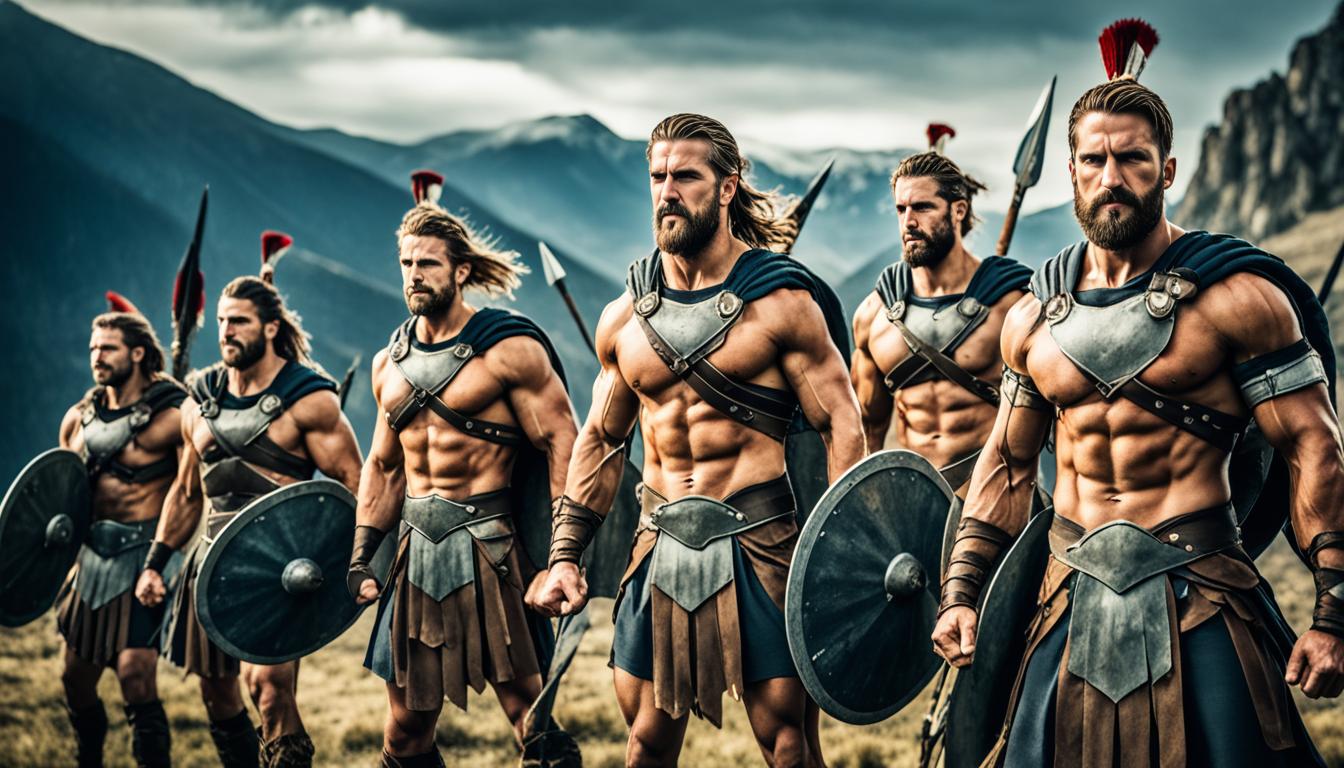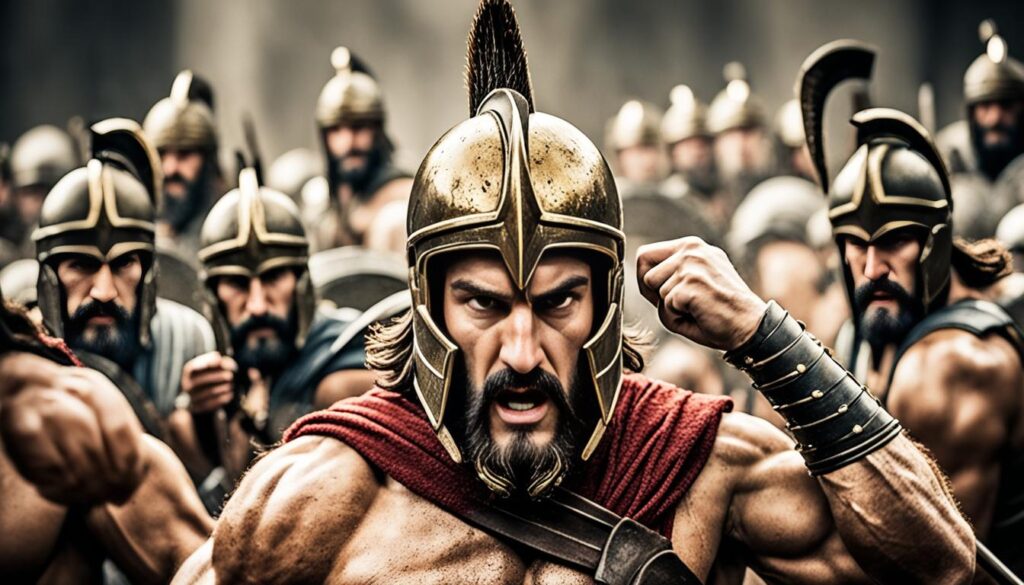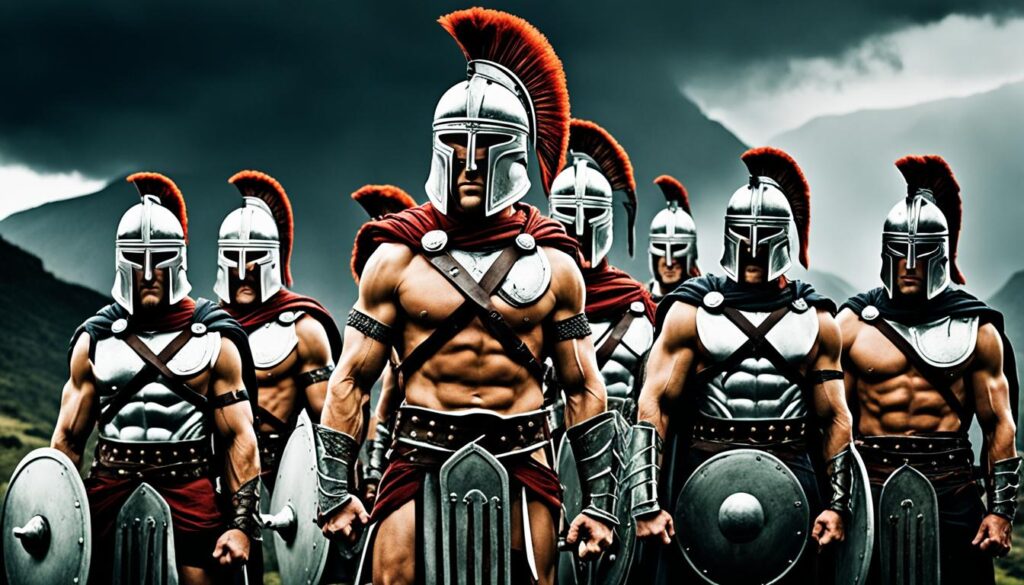
When picturing ancient Spartan warriors, one might imagine them with their hair cropped short, ready for battle. But did Spartans actually have long hair? Or is this a misconception that has persisted over time? In this article, we will delve into the historical evidence and explore the grooming traditions of Spartan warriors to uncover the truth about their hairstyle.
From the accounts of ancient writers to the artistic depictions found in sculptures and figurines, we will examine the clues left behind to reveal whether Spartans truly sported long locks. We will also consider the practical implications of hairstyle choices in the context of military life and explore the broader cultural significance of hair in ancient Greek society.
Join us on this journey as we separate fact from fiction, challenge common beliefs, and shed light on the grooming traditions of ancient Spartan warriors. Prepare to have your preconceptions tested and your knowledge expanded.
Key Takeaways:
- Spartans were known for wearing their hair long, contrary to common belief.
- Braided hairstyles were favored by Spartan warriors, not dreadlocks.
- Grooming and appearance were highly valued in ancient Greek society, including the Spartans.
- Depictions in ancient art support the notion of Spartans with braided or plaited hair.
- Popular media representations may deviate from historical accuracy.
Ancient Greek Hairstyles
In ancient Greek culture, hairstyles held a significant role, and the Spartans were no exception. They believed that long hair enhanced the appearance of handsome men and made ugly men more intimidating. This belief was deeply ingrained in Spartan culture, where grooming and appearance were highly valued, particularly in the context of their military prowess.
Spartan boys would have their hair cut short until they reached puberty, adhering to the practicality of childhood. However, upon reaching puberty, they allowed their hair to grow long as a symbol of maturity and masculinity. This emphasis on long hair represented their transition into adulthood and their readiness to take on the responsibilities of Spartan warriors.
Spartan women also took part in the tradition of long hair, although in a different style. They tied their hair in a knot over the crown of their heads, creating a distinctive and elegant appearance. This hairstyle was a reflection of the Spartan women’s dedication to maintaining the cultural values of strength and beauty.
“The Spartans believed that by presenting themselves with long hair, they demonstrated their commitment to their culture and their dedication to becoming fearsome warriors.”
These ancient Greek hairstyles of both men and women had a profound impact on Spartan culture and appearance. The Spartans considered their long hair as an essential aspect of their identity, which contributed to their overall presence and intimidation on the battlefield as well as within their society.
| Ancient Greek Hairstyles | Description |
|---|---|
| Braided Hairstyles | A common choice among Spartan men, braided hairstyles allowed for better hair care and alignment with their military grooming practices. |
| Knot Hairstyles | Spartan women tied their hair in a knot over the crown of their heads, representing their commitment to cultural values and beauty. |
These hairstyles encompassed the Spartan warriors’ appearance and reflected their dedication to an intimidating and strong image. The ancient art and historical records provide valuable insights into the specific hairstyles favored by Spartans, shedding light on the culture and aesthetics of ancient Greek civilizations.
The Importance of Grooming in Spartan Military
While the emphasis on long hair and specific hairstyles was a cultural tradition, it also had practical significance within the Spartan military. Spartan warriors recognized the importance of proper grooming and maintenance of their long hair, even amidst the harsh conditions of battle. They believed that attending to their hair was a way to prepare themselves mentally and physically for the challenges they would encounter on the battlefield.
Herodotus, a historian of ancient Greece, mentioned the Spartan soldiers’ attention to grooming their hair before going into battle. Although the specific techniques and products used for haircare during ancient times remain undocumented, it is likely that Spartans utilized simple tools such as combs and natural oils to ensure the health and appearance of their long locks.
Grooming played a crucial role in instilling a sense of discipline and order within the Spartan military. By prioritizing their appearance and keeping their hair well-groomed, Spartan warriors demonstrated their commitment and adherence to the values upheld by their culture and society.
“The grooming habits of Spartan warriors were renowned for their simplicity and practicality, reflecting the disciplined and orderly nature of their military.”
Spartan Warriors and Grooming Traditions
The grooming habits of Spartan warriors were renowned for their simplicity and practicality. In addition to growing their hair long, they were known to take great care of their hair before going into battle. This involved combing and dressing their hair with special care, as mentioned by Herodotus. This attention to grooming was a way for Spartans to prepare themselves mentally and physically for the challenges of war. While the specific products and techniques used for haircare during ancient times are not well-documented, it is likely that Spartans used simple tools like combs and oils to maintain the health and appearance of their long hair.

| Grooming Habits of Spartan Warriors | Description |
|---|---|
| Long hair | Spartan warriors grew their hair long as part of their grooming traditions |
| Combing | They took special care in combing their hair, ensuring it was neat and presentable before battle |
| Dressing | They dressed their hair with oils or other products to maintain its health and appearance |
Historical Perspectives on Spartan Hairstyles
The depictions of Spartan warriors in ancient art provide valuable insight into their hairstyles. Sculptures and figurines from the 6th and 7th centuries BCE depict Spartan men with braided or plaited hair. These hairstyles are characterized by straight ends and wavy edges, which align with the style of braids. These artistic representations support the notion that Spartans did not have dreadlocks but preferred braided hairstyles.
“The artistic representations of Spartan warriors in ancient art show them with long, braided hair. These hairstyles were well-documented and favored by Spartan men, as they depicted strength and a sense of warrior identity.”
Additionally, the practicality of wearing braids is evident when considering the challenges of helmet-wearing. The mass created by dreadlocks would make wearing helmets difficult, whereas braiding would minimize the mass and allow for a more comfortable fit.
| Image | Description |
|---|---|
 | Ancient artwork depicting Spartan warriors with braided hairstyles. |
- Braided hairstyles characterized Spartan warriors’ appearance.
- Braids were preferred due to their practicality with helmet-wearing.
- Ancient art supports the use of braids among Spartans.
By examining these artistic representations, we gain a deeper understanding of the importance of hairstyles in Spartan culture and the appearance of Spartan soldiers.
Greek and Roman Hairstyles
Greek and Roman civilizations had distinct hairstyles, reflecting the diverse grooming practices across different regions and time periods. While the Spartans preferred long hair, other Greeks, like the Athenians, had specific hairstyles associated with different stages of life. Greek women, in particular, embraced various styles, often using hairbands and head-dresses to adorn their hair.
On the other hand, Roman hairstyles evolved into elaborate creations over time. Roman women, in their pursuit of beauty, employed false hair or wigs to achieve voluminous and extravagant styles.
In both Greek and Roman societies, hair and grooming held significant importance, symbolizing social status, cultural values, and the importance placed on personal appearance.
| Greek Hairstyles | Roman Hairstyles |
|---|---|
|
|
The differing hairstyles in Greek and Roman cultures highlight the unique aesthetics and values of each civilization. While the Spartans portrayed strength through their long hair, Greek women used hairbands and head-dresses as fashionable accessories. In contrast, Roman women embraced increasingly intricate hairstyles, often resorting to artificial enhancements for desired effects.
Historical Accuracy in Media Representations
When it comes to popular media depictions like the movie “300” and the video game “Assassin’s Creed Odyssey,” it is important to recognize that their portrayal of Spartan hairstyles may not be historically accurate. These sources often take creative liberties and prioritize entertainment value over historical authenticity.
While they may draw inspiration from certain elements of ancient Greek hairstyles, such as braids or intricate designs, it is crucial to critically evaluate such representations and consult reliable historical sources for a more accurate understanding of Spartan grooming traditions and appearance.

Exploring Spartan Hair Myths and Facts
There are various myths and misconceptions surrounding Spartan hairstyles, including the idea that Spartans had dreadlocks. While it is true that dreadlocks were present in ancient Greece, there is limited evidence to support the claim that Spartans specifically wore them. Instead, historical sources, artistic depictions, and practical considerations suggest that Spartans preferred braided hairstyles.
“Spartans are often depicted with dreadlocks, but that is a misconception. They actually preferred braided hairstyles, which provided better hair care and aligned with their grooming traditions.”
These braids allowed Spartans to maintain the health and appearance of their long hair while meeting the practical needs of their military lifestyle. Braids were easier to manage and did not create difficulties when wearing helmets during battle.
Debunking the Spartan Dreadlocks Myth
The myth that Spartans had dreadlocks likely stems from a general association between ancient warriors and this hairstyle. While it is true that some Greek warriors wore dreadlocks, there is no substantial evidence to suggest that Spartans followed this trend. In fact, historical sources and ancient art representations consistently depict Spartans with braided or plaited hair.
Depictions in Ancient Art
A closer look at ancient art provides valuable insights into Spartan hairstyles. Sculptures and figurines from the 6th and 7th centuries BCE often show Spartans with braided or plaited hair, characterized by straight ends and wavy edges. These artistic representations support the notion that Spartans favored braided styles, which provided a practical and aesthetically pleasing alternative to dreadlocks.
To emphasize the importance of braided hairstyles among Spartans, consider the following artistic depiction:
| Artwork | Description |
|---|---|
| Ancient statue of a Spartan warrior, showcasing the characteristic braided hairstyle. |
As seen in the image above, the Spartan warrior is depicted with neatly braided hair, highlighting the attention Spartans paid to their grooming and hairstyle choices.
Practical Considerations
Braided hairstyles were not only a matter of style for Spartans but also aligned with their practical needs. The mass created by dreadlocks would have made it difficult to wear helmets properly, potentially hindering their effectiveness in battle. On the other hand, braiding hair minimized the mass, allowing Spartans to wear helmets comfortably while maintaining a fierce appearance.
In summary, while there are widespread misconceptions regarding Spartan hairstyles and the presence of dreadlocks, historical evidence, artistic depictions, and practical considerations suggest that Spartans preferred braided hairstyles. It is essential to rely on reliable historical sources and consult expert opinions to discern between myths and facts surrounding ancient Spartan hairstyles.
Conclusion
In conclusion, the historical evidence suggests that Spartans did not have dreadlocks but instead wore their hair long, often styled in braids or plaits. This preference for braided hairstyles can be seen in ancient art depictions and is supported by practical considerations such as helmet-wearing. Despite popular media representations deviating from historical accuracy, it is crucial to consult reliable sources and critically evaluate the information presented.
Understanding the grooming traditions and hairstyles of ancient Greek civilizations, including Spartans, provides insights into their cultural values and aesthetics. The historical accuracy of these representations contributes to a more comprehensive understanding of Spartan grooming traditions and the significance of ancient Greek hairstyles.
By examining the evidence from ancient sources and artistic depictions, we can debunk myths and misconceptions surrounding Spartan hairstyles. Instead of dreadlocks, braided hairstyles were prevalent among Spartans, aligning with their practical and aesthetic considerations. For a more accurate understanding of Spartan grooming traditions and appearance, it is essential to rely on reliable historical sources and consider the cultural context of ancient Greece.






